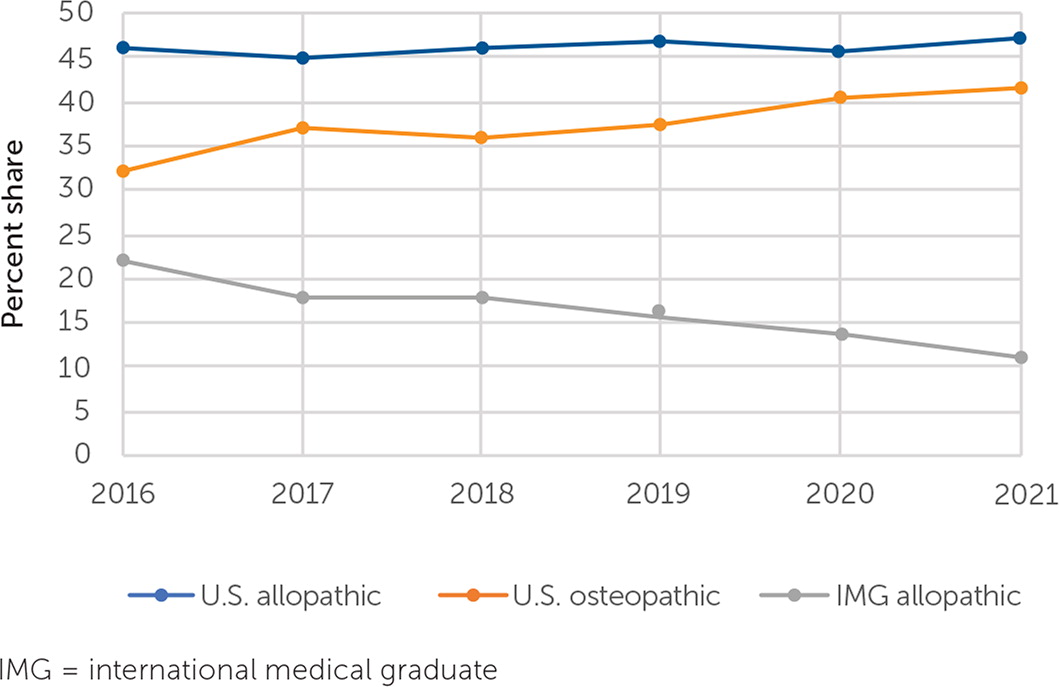
Am Fam Physician. 2024;109(2):114-115
Author disclosure: No relevant financial relationships.
The Association of American Medical Colleges reported a shortage of 45,000 primary care physicians in 2020 and projects shortages of 65,000 by 2025 and 104,900 by 2030.1 The shortage has been exacerbated by physician retirement due to the COVID-19 pandemic.2 The increasing deficit is partially because of the decline in medical students entering primary care specialties. Interest in family medicine has been flat for the past 10 years, and only 13% of U.S. allopathic and osteopathic graduates enter Accreditation Council for Graduate Medical Education (ACGME)-accredited family medicine programs.3 Most recent residency matches report that only 9% of allopathic medical students choose family medicine.4 There has been more interest in primary care in osteopathic schools, with 23% of these students expressing an interest in primary care.5
Osteopathic medical schools design their curricula to emphasize family medicine, with additional required courses and rotations in primary care encompassing almost 50% of clinical experiences.6 On average, only 30% of the allopathic curriculum focuses on primary care, and students report a lack of encouragement for entering the family medicine specialty.7 Understanding medical student choice is critical to creating targeted recruiting interventions. The current analysis estimates the proportion of family medicine residents trained in osteopathic and allopathic schools.
Using the 2016 to 2021 American Academy of Family Physicians Family Medicine Residency Census, annual member data were summarized on degree type and international medical graduate status for those entering their first year of residency training at ACGME-accredited family medicine residencies.3 Approximately 23,000 residents entered a family medicine residency program during the six-year window, which was an average of 3,833 residents per year. The total numbers of U.S.-trained allopathic and osteopathic graduates and allopathic international medical graduates were identified to calculate percentages that characterize the composition of first-year entrants into family medicine residencies (Figure 1).

From the 2021 family medicine residency entrants, 47.2% were U.S.-trained allopathic graduates, 41.7% were U.S.-trained osteopathic graduates, and 11.1% were allopathic international medical graduates. Osteopathic schools had the most notable increase in the family medicine workforce between 2016 and 2021, increasing 5.31% per year, whereas U.S. allopathic graduates increased by 0.58% and international medical graduates decreased by 12.8%.
Specialty choice is influenced by having an interest in family medicine before entering medical school, leadership opportunities, involvement in interest groups, and mentorship.8 This could explain why applicants with primary care interest are choosing osteopathic over allopathic medical schools. Women, nontraditional students, students from rural backgrounds, and first-generation college graduates are more likely to select family medicine as their specialty.9 To address the increasing shortage of primary care physicians, admissions committees should prioritize recruiting candidates from these groups. All medical schools should increase students' participation in primary care rotations, provide mentorship in primary care, and support student leadership in the primary care fields.
